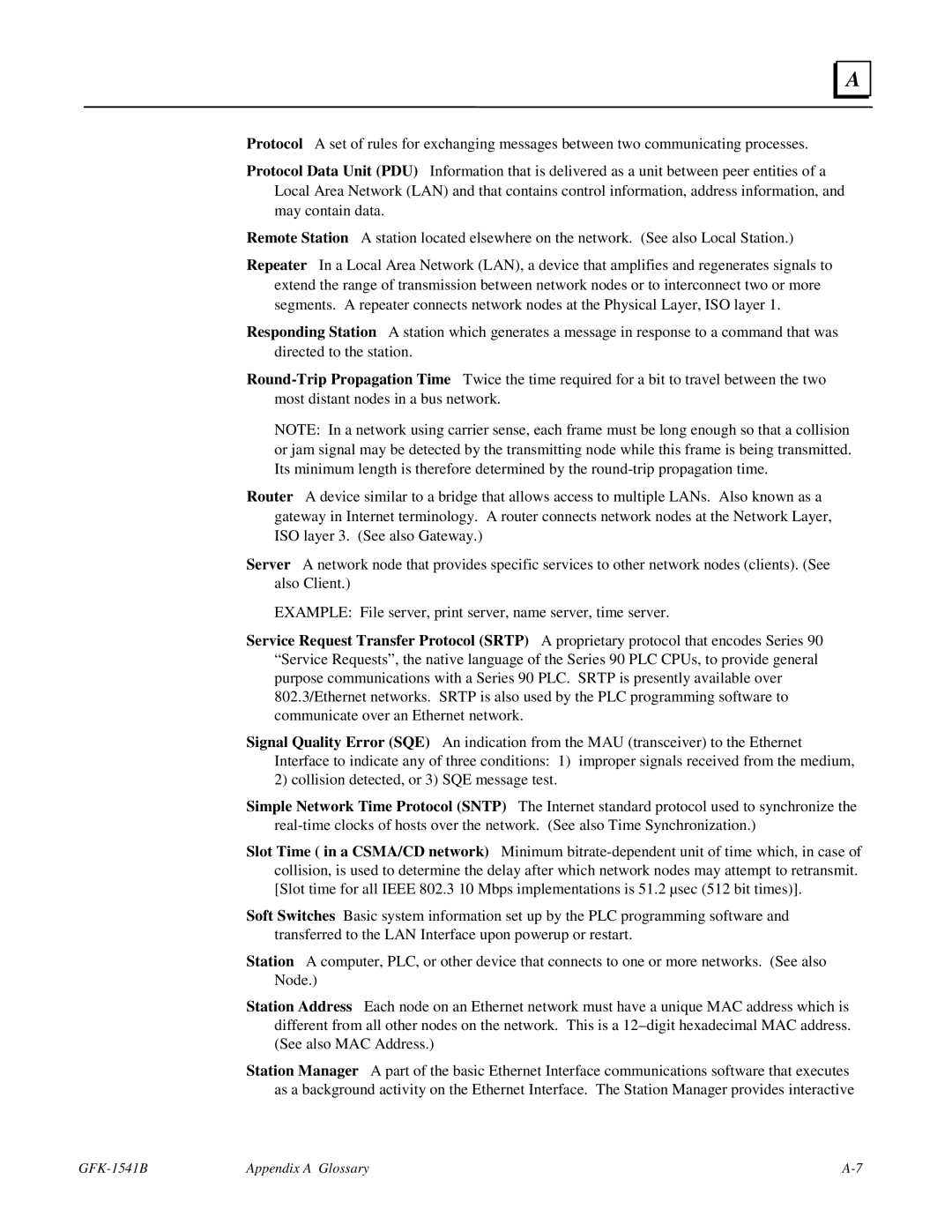A |
Protocol A set of rules for exchanging messages between two communicating processes.
Protocol Data Unit (PDU) Information that is delivered as a unit between peer entities of a Local Area Network (LAN) and that contains control information, address information, and may contain data.
Remote Station A station located elsewhere on the network. (See also Local Station.)
Repeater In a Local Area Network (LAN), a device that amplifies and regenerates signals to extend the range of transmission between network nodes or to interconnect two or more segments. A repeater connects network nodes at the Physical Layer, ISO layer 1.
Responding Station A station which generates a message in response to a command that was directed to the station.
NOTE: In a network using carrier sense, each frame must be long enough so that a collision or jam signal may be detected by the transmitting node while this frame is being transmitted. Its minimum length is therefore determined by the
Router A device similar to a bridge that allows access to multiple LANs. Also known as a gateway in Internet terminology. A router connects network nodes at the Network Layer, ISO layer 3. (See also Gateway.)
Server A network node that provides specific services to other network nodes (clients). (See also Client.)
EXAMPLE: File server, print server, name server, time server.
Service Request Transfer Protocol (SRTP) A proprietary protocol that encodes Series 90 “Service Requests”, the native language of the Series 90 PLC CPUs, to provide general purpose communications with a Series 90 PLC. SRTP is presently available over 802.3/Ethernet networks. SRTP is also used by the PLC programming software to communicate over an Ethernet network.
Signal Quality Error (SQE) An indication from the MAU (transceiver) to the Ethernet Interface to indicate any of three conditions: 1) improper signals received from the medium, 2) collision detected, or 3) SQE message test.
Simple Network Time Protocol (SNTP) The Internet standard protocol used to synchronize the
Slot Time ( in a CSMA/CD network) Minimum
Soft Switches Basic system information set up by the PLC programming software and transferred to the LAN Interface upon powerup or restart.
Station A computer, PLC, or other device that connects to one or more networks. (See also Node.)
Station Address Each node on an Ethernet network must have a unique MAC address which is different from all other nodes on the network. This is a
Station Manager A part of the basic Ethernet Interface communications software that executes as a background activity on the Ethernet Interface. The Station Manager provides interactive
| Appendix A Glossary |
